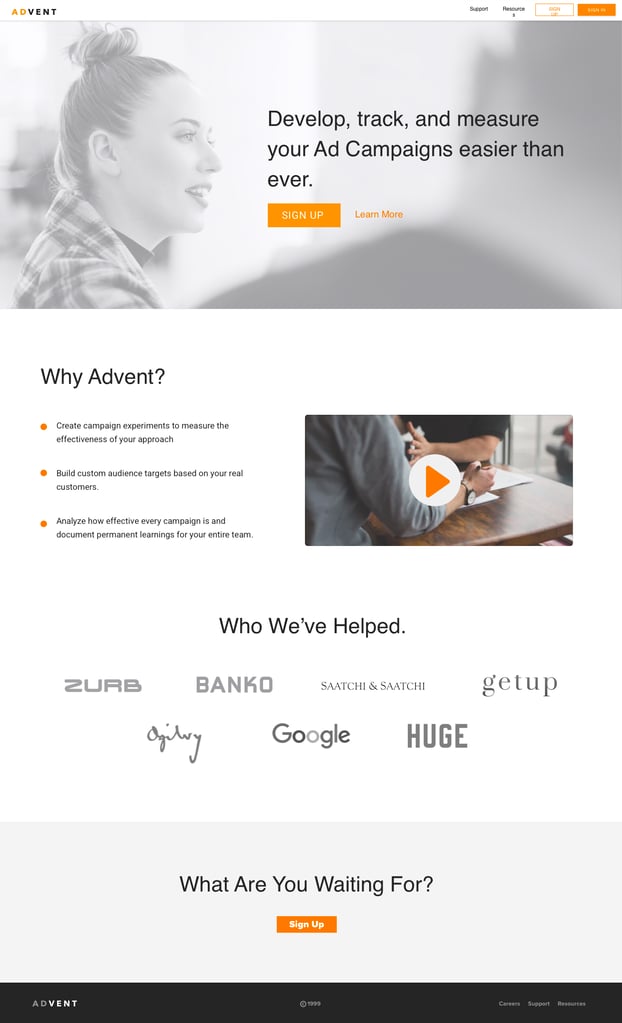Have you ever wondered why visitors land on your site only to leave without clicking through to another page? That’s your bounce rate talking, and if it’s sky-high, it’s time to take action. Let’s unravel the enigma of the high bounce rate and explore practical strategies to keep your visitors engaged.
For most people, the website bounce rate is a mysterious metric. In layman’s terms, it tells you how many people “bounced” away from your website after viewing one page. Olena Bomko’s LinkedIn post caught our attention with her direct and somewhat mocking view of the typical website visit in 2023.
- Battle with all but essential cookies.
- Scan the website. Scan it 2x more.
- Try to figure out what all this jargon means.
- Stop the auto-playing video.
- Close the support widget.
- Close the “subscribe to our newsletter” pop-up.
- Open the Pricing page
- Search 30 mins for non-existent pricing.
- Thinking “why did I open this website?”
- Give up.
- Open a competitor’s website.
Understanding the Bounce Rate Blues
A high bounce rate isn’t just a number—it’s a red flag waving at you, signaling a disconnect between your website and your audience’s expectations. But what’s considered high? FullStory reveals the industry average bounce rate to lie between 26-70%. And when you drill down into specific sectors, you’ll find that B2B websites typically hover around 56%, while B2C sites fare a bit better at 45%.

Why Are Visitors Bouncing?
If you are in the upper range of the industry average bounce rate, you might be asking yourself, “why is my bounce rate so high?” To cut through the clutter, let’s first identify the traps that may be nudging your visitors towards the exit:
- Battling Cookie Pop-Ups: Your first impression might be a battle with cookie notifications—not the sweet start your visitors hoped for.
- Overwhelming Your Visitors: Are they scanning your site once, twice, thrice, and still not getting it? That’s a clear sign of information overload.
- Getting Lost in Jargon: If your site reads like an insider’s manual, your visitors are likely to feel out of the loop.
- Auto-Playing Videos: That sudden blast of sound? It’s not a welcome surprise.
- Widget Whack-a-Mole: Support widgets and pop-ups can feel like an annoying game of whack-a-mole, distracting from the content that brought your visitors there in the first place.
- Hunting for Pricing: When visitors can’t find your pricing after a search expedition, they’re only a click away from a competitor.
- The “Why Am I Here?” Moment: If visitors question their decision to open your site, it’s a missed opportunity to resonate with them.
- Throwing in the Towel: Frustration leads to abandonment. A site visit shouldn’t feel like a task.
Bad UX, confusing content, non-responsive mobile design, and technical glitches are reasons visitors might leave your site post-haste. FullStory has a great breakdown of the bounce rate: A deeper dive into FullStory’s analysis can offer more nuanced insights into your bounce rate issues.
Craft Content That Flows Effortlessly
It might seem elementary, but the legibility of your content often slips through the cracks. Crafting content that’s a breeze to read and comprehend is vital. Aim for clear and succinct sentences, structure them into brief paragraphs, and use headings and subheadings to create natural pauses in your narrative.
Incorporate visuals like images and videos when they enhance your storytelling because they can significantly boost reader engagement and punctuate lengthy text passages.
Your endgame is to design an online space where visitors can glide through your content without feeling bombarded by information. To gauge the readability of your content, readability calculators can be valuable tools. They provide insight into the complexity of your writing and help ensure it’s accessible to a wider audience.
How to Reduce High Bounce Rates with Helio
Helio jumps in as your troubleshooting partner, helping you understand the “why” behind these bounce-inducing issues. With a robust suite of survey and usability questions, you’ll swiftly get insights from your target audience. Whether your page is fresh out of the development oven or has been live for a while, understanding the user experience through direct questioning and data is key to improvement.
Now, let’s roll up our sleeves and reduce that high bounce rate. Recently, we conducted a Helio test for Advent, an advertising campaign management solution, to test elements that may contribute to a high bounce rate. Our goal was to pinpoint the elements that captivate visitors, helping us prioritize any necessary redesigns for better engagement. Here’s what we found:
Participants had a positive impression of Advent’s homepage
First, we showed Advent’s homepage to a sample audience of advertising consultants and small to mid-sized business advertisers.

Then, we asked participants to indicate what kind of impression the page left on them. Response categories included four positive sentiments (motivating, clear, interesting, simple), and four negative sentiments (discouraging, confusing, indifferent, complicated). We found a majority of participants had a positive impression of Advent’s homepage.

The main “sign up” CTA received the most clicks
In this example, we experimented with various calls-to-action to discern which was most effective in motivating users to proceed to the next phase of interaction. We found the primary “sign up” CTA received significantly more clicks than the softer “learn more” CTA nearby.

By optimizing for conversions, Advent was able to reduce the bounce rate on their homepage and convert more users into sign-ups.
Other Ways to Reduce High Bounce Rates
- Speed Up Your Load Time: Patience is a scarce commodity online. If your page is sluggish to load, users won’t wait around. Optimize images, streamline your code, and consider a content delivery network (CDN) to pick up the pace.
- Clarify Your Meta Game: Misleading or vague meta titles and descriptions are culprits for quick exits. Your metadata should match your content—clearly and accurately.
- Eliminate Blank Spaces and Errors: A blank page or a 404 error is a dead end for user engagement. Regularly check your site for technical snags and ensure there’s always something for your visitor to see or do.
- Enrich Content Quality: Substance matters. Ensure your content is not only high-quality but also optimized for your audience. Use language they understand and provide value that resonates with their needs.
- Refine the UX: Your website should be intuitive, accessible, and, frankly, enjoyable to navigate. Ditch designs that annoy or confuse. Simple is often better.
- Make Mobile a Priority: With mobile browsing on the rise, if your site isn’t mobile-friendly, you’re turning away a significant portion of your potential audience. Test your site on various devices to ensure compatibility.
- Be Moderate with CTAs: Asking too much, too soon, is a turnoff. Build a relationship with your users first. Let them explore before pushing for subscriptions or sign-ups.
Implementing these strategies can help transform your website into a hub of activity rather than a bounce-launchpad. Remember, your goal is to invite your audience in and encourage them to stay, explore, and ultimately convert.
FAQs
A bounce rate measures the percentage of visitors who land on your website and leave without navigating to any other page. It’s a metric that indicates users’ engagement and interest in your site.
Several factors can contribute to a high bounce rate, such as slow loading times, overwhelming or unclear content, technical errors, poor user experience (UX), non-responsive mobile design, and more.
The industry average bounce rate ranges from 26-70%, with B2B websites averaging around 56% and B2C sites around 45%. Rates above these can be considered high for their respective sectors.
To reduce your bounce rate, optimize page load speed, clarify metadata, ensure high-quality content, refine UX, prioritize mobile responsiveness, and use calls-to-action (CTAs) moderately. Tools like readability calculators can also help make content more user-friendly.
Here are a few ways to fix a high bounce rate:
- Make sure your landing page is visually appealing by testing with a Helio audience.
- Use exit-intent popups as a hail mary to convert users before they click the X button and close out the tab.
- Use a Helio survey intercept to ask visitor why they’re leaving.
- Test your mobile UX with a Helio audience to improve experience across device types.
- Display clear calls to action so users know what they should do next.
- Implement internal linking so users have more pathways to click deeper into your site.
- Optimize page load time with technical SEO.
Bounce rate is the percentage of single-page sessions, whereas exit rate is the percentage of all visits that were the last in the session. A high exit rate doesn’t necessarily indicate a problem unless it’s on a page that leads to another part of your site.
To compare your bounce rate with the industry average, refer to analytics platforms like FullStory that provide benchmark data. Adjust your strategy based on whether your bounce rate falls within the typical range for your industry.
Yes, improving mobile UX can significantly reduce bounce rates, as many users browse on mobile devices. Ensuring your site is mobile-friendly is crucial to keeping visitors engaged.
High-quality, relevant, and well-optimized content is key to engaging visitors and encouraging them to explore more of your site, which can lower your bounce rate. Content should be accessible and resonate with your audience’s needs.
Regularly test your website’s performance, load times, UX, and content quality. Utilize feedback tools and surveys to understand user behavior and preferences. Make data-driven changes to enhance user experience and engagement.
Tools like Helio offer survey and usability questions to gain insights from your audience. Google Analytics provides comprehensive data on bounce rates and user interactions to guide your optimizations.



